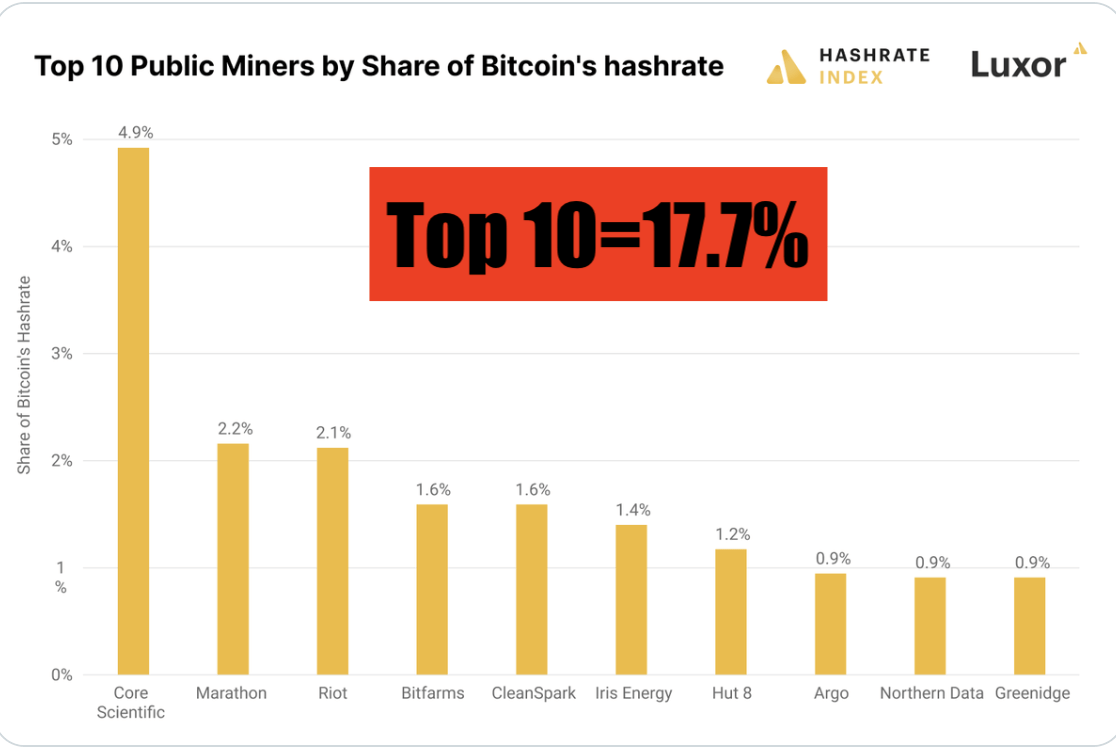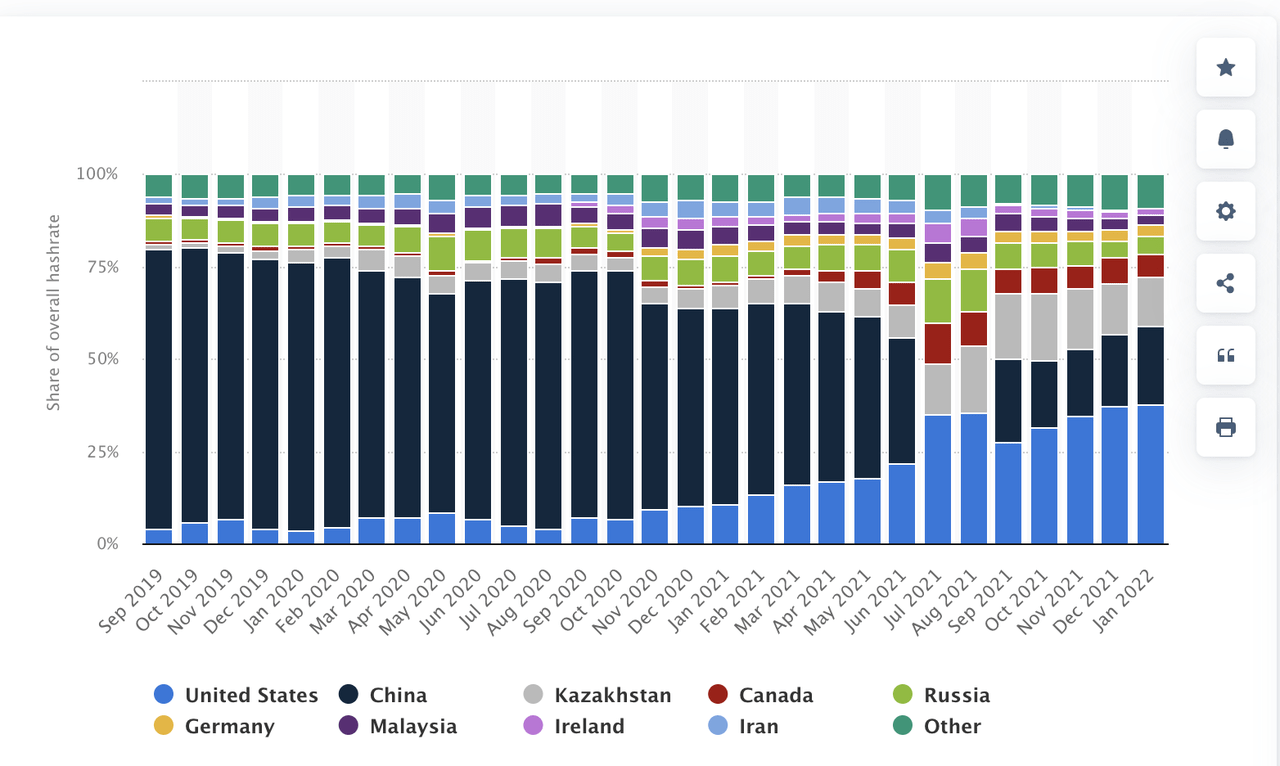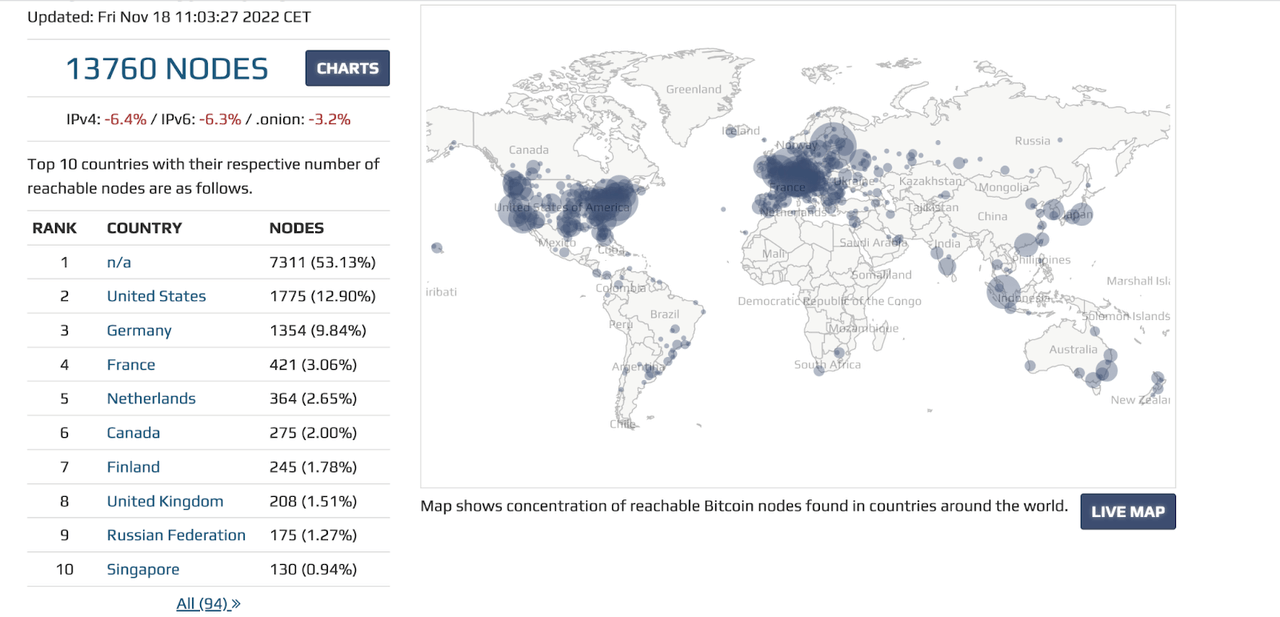
duoogle
Thesis Summary
Following the demise of FTX (FTT-USD), Bitcoin (BTC-USD) naysayers and maximalists alike have come out of the woodwork to attack/defend Bitcoin.
On the one hand, some see the FTX collapse as proof that Bitcoin, and the broader crypto market, have become nothing but a giant Ponzi scheme. That despite all its advanced technology, Bitcoin is just a speculative investment
On the other hand, there are those that see further proof of the need for Bitcoin following the FTX demise. After all, FTX was a centralized exchange, and Bitcoin aims to be a tool for decentralization.
In a way, both camps are right, and both are wrong.
How centralized is Bitcoin?
One of the first words often used to describe Bitcoin is decentralization. The biggest draw of Bitcoin is that it is not controlled by anyone. Its supply is determined by immutable code, and it is purposefully designed to make its ownership accessible to anyone around the globe with an internet connection.
But while Bitcoin is, theoretically, decentralized, in practice, a lot of power is concentrated in a few entities and small areas.
Let’s look at the key players in the Bitcoin ecosystem; miners, node providers and owners.

Hashrate (Author’s elaboration based on Luxor INdex)
Now, as we can see in the chart above, one could argue that mining is currently a highly centralized market. The top 10 publicly traded crypto miners control 17.7% of the total Bitcoin hash rate.
We can see that there is also a strong geographical concentration in the chart below:

Hashrate by country (Statista)
Here we have the Bitcoin hash rate by country, and we can see that over half of the hash rate is controlled by China and the United States combined.
Now, let’s move on to Node distribution:

Bitcoin nodes (Bitnodes)
Once again, we see that nodes, which are in charge of updating the Bitcoin blockchain, are mostly concentrated in the USA and Europe. The chart also shows 53% of nodes in an undetermined location, but I think it is safe to assume that many could be coming from China.
Lastly, we have to consider Bitcoin ownership. On-chain data can be very helpful in determining how Bitcoin is distributed amongst holders, but it has some problems. The issue is that a single address isn’t equivalent to a single person, and one person can have multiple addresses. Also, the opposite can be true, and multiple people’s funds could be stored in a single address (as is the case with exchanges).
A Bloomberg report stated that 95% of the Bitcoin was controlled by only 2% of the addresses. However, this was disputed by Glassnode, which provided a much more thorough analysis of Bitcoin ownership, and found that, at most, the top 2% of network entities control 71.5% of supply.
Ultimately, we have seen an increase in Bitcoin concentration, which can be attributed to the increased participation by institutions and large investors.
So, is Bitcoin actually decentralized? That depends on what the meaning of this word is. In practical terms, a lot of the Bitcoin ecosystem is dominated by a handful of people/companies, but that doesn’t mean Bitcoin is centralized. The cryptocurrency still has very low barriers to entry for those wanting to mine or run a node, and using pools is an option.
Also, the key issue here is that Bitcoin doesn’t rely on centralization for its success, but rather its centralization can be seen as a testament to its success. Bitcoin does not need large concentrations of wealth or effort to mine or run transactions, even if that is the case now. This means Bitcoin is still “anti-fragile”, as it won’t be susceptible to the collapse of an exchange like FTX, or even a mining ban like the one China enacted.
Bitcoin Utility
Now, with the demise of FTX and its token FTT, and the overall weakness in crypto, extreme bears are again coming out of the woodwork and predicting a total collapse. This is also a very far cry from the truth. While, indeed, I do see lower Bitcoin prices in the short term, there is no doubt in my mind that we are going back over all-time highs eventually.
Those without the proper knowledge of Bitcoin fail to understand that Bitcoin is very different from the thousands of tokens that have been launched in the last 10 years. FTT was purposefully built to support the FTX ecosystem, so it is not surprising that both collapsed together. In a lot of ways, FTT tokens are just like FTX equity.
But this is not the case with Bitcoin. This cryptocurrency has no company behind it, nor does it even have a known creator behind it. It was designed to operate for all intents and purposes like gold, and it is in many ways superior to gold. Bitcoin has a real use as a store of value, and this is proven by the fact that tiny nations like Nigeria are amongst the most crypto-curious in the world. For these people, Bitcoin offers actual utility as a store of value and a vehicle to transfer wealth. This concept may seem alien to us now, but the dollar is also subject to the same risks as every other fiat currency.
Now, that is not to say that most of Bitcoin ownership today isn’t speculative. This is undeniable, and it is supported by the charts laid out above. Most of the people holding Bitcoin today are doing so with the hopes of increasing their wealth in dollar terms. But like with the centralization argument, one thing doesn’t negate the other.
The fact that Bitcoin is being bought up by speculators doesn’t take away from the fact that it holds the necessary properties to become accepted as a means of payment worldwide. It doesn’t take away from the fact that Bitcoin can replace and improve our current financial system. And it doesn’t take away from the fact that in an increasingly fractured world, there is a need for a neutral form of money to emerge.
Final Thoughts
In conclusion, we must learn to distinguish between what Bitcoin is, or what it is perceived as, and what Bitcoin can be. Bitcoin is a speculative investment, and its price will fluctuate wildly in years to come. Fortunes will be made, and fortunes will be lost. The crypto space will see continued innovation but also more instances of fraud and collapse. The path to growth is not a straight line.
But ultimately, time will prove that Bitcoin has a very important role to play in our financial and monetary system.


Be the first to comment